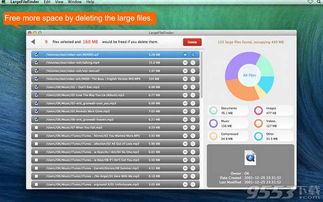
Large File Sharing: A Comprehensive Guide
Sharing large files has become an essential part of our digital lives. Whether you’re a professional, a student, or just someone who needs to send big files, understanding the best methods and tools for large file sharing is crucial. In this article, we’ll explore various aspects of large file sharing, including the challenges, the tools available, and the best practices to ensure a smooth and secure transfer.
Understanding the Challenges

Large file sharing presents several challenges, primarily due to file size limitations, security concerns, and the need for efficient transfer methods. Let’s delve into these challenges to better understand how to overcome them.
| Challenge | Description |
|---|---|
| File Size Limitations | Many email services and instant messaging platforms have size limits for attachments, which can be a barrier when sharing large files. |
| Security Concerns | Transferring large files over the internet can expose them to potential security threats, such as hacking and data breaches. |
| Efficiency | Large files take longer to transfer, and the process can be interrupted by network issues, requiring a re-start. |
Tools for Large File Sharing

Several tools and services are available to help you share large files. Here’s a look at some of the most popular options:
- Cloud Storage Services: Platforms like Google Drive, Dropbox, and Microsoft OneDrive offer cloud storage solutions that allow you to upload and share large files easily.
- File Transfer Services: Services like WeTransfer, Send Anywhere, and Filemail specialize in large file sharing, often with no size limits and easy-to-use interfaces.
- Peer-to-Peer (P2P) Networks: P2P networks like BitTorrent enable users to share large files by distributing the data across multiple sources, which can significantly reduce transfer times.
- FTP and SFTP: File Transfer Protocol (FTP) and its secure variant, SFTP, are widely used for large file transfers, especially in business environments.
Best Practices for Large File Sharing

When sharing large files, it’s essential to follow best practices to ensure a successful and secure transfer. Here are some tips:
- Use Secure Connections: Whenever possible, use secure connections like SFTP or HTTPS to protect your files from unauthorized access.
- Compress Files: Compressing your files before sharing can reduce their size and transfer time. Tools like WinRAR and 7-Zip are popular for file compression.
- Verify Recipients: Ensure that the recipient has the necessary software and storage space to receive the file.
- Use a Tracking System: Some file-sharing services offer tracking features that allow you to monitor the progress of your file transfer and ensure it reaches its destination.
Case Studies: Large File Sharing in Action
Let’s look at a few real-world examples of large file sharing in different contexts:
1. Medical Data Sharing
In the medical field, large file sharing is crucial for sharing patient records, imaging files, and research data. Secure FTP servers are commonly used for this purpose, ensuring that sensitive information remains protected.
2. Video Production
Video production companies often need to share large video files with clients and collaborators. Cloud storage services like Amazon S3 and Google Cloud Storage are ideal for this, as they offer high-speed uploads and secure access controls.
3. Academic Research
Academic researchers often need to share large datasets with colleagues and institutions. Platforms like Dryad and Figshare provide a secure and centralized location for sharing research data, ensuring that it’s easily accessible and properly cited.
Conclusion
Large file sharing is an essential aspect of our digital lives, and with the right tools and best practices, you can ensure a smooth and secure transfer of your files. By understanding the challenges, exploring the available tools, and following best practices, you’ll be well-equipped to share large files with ease.




